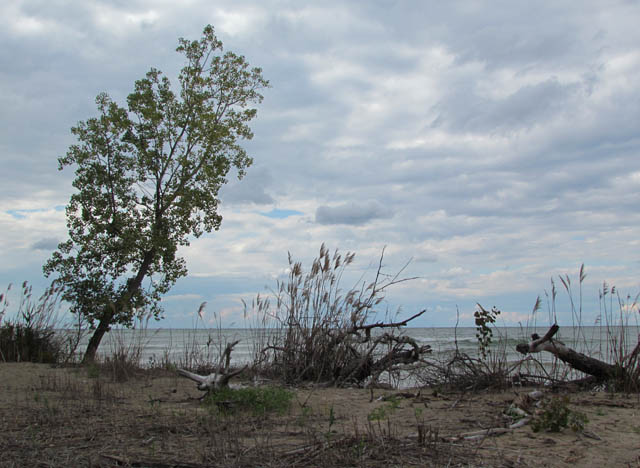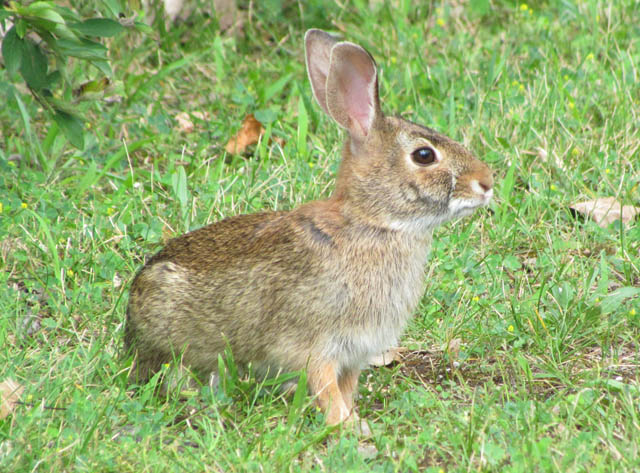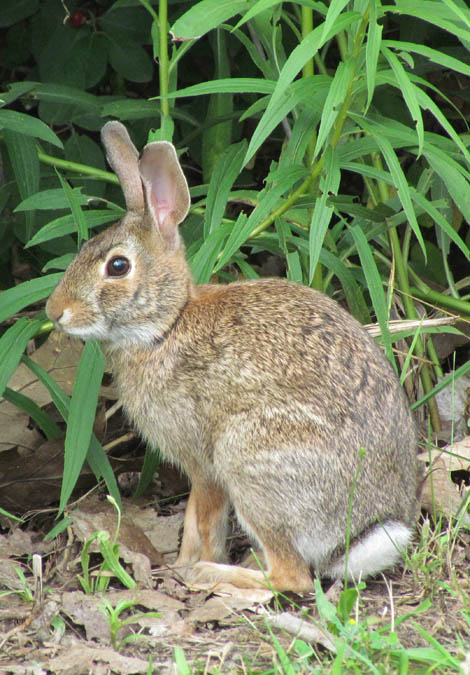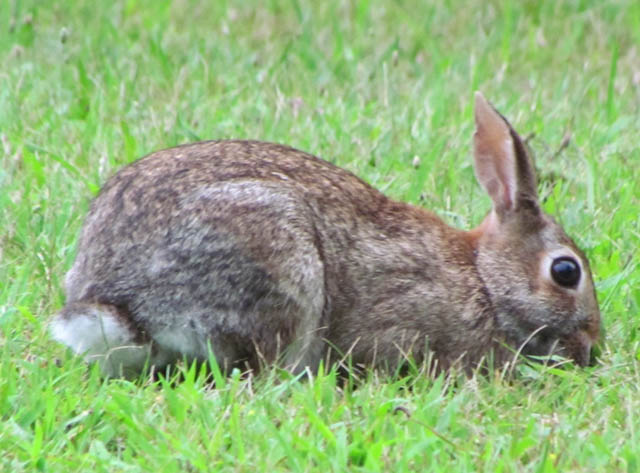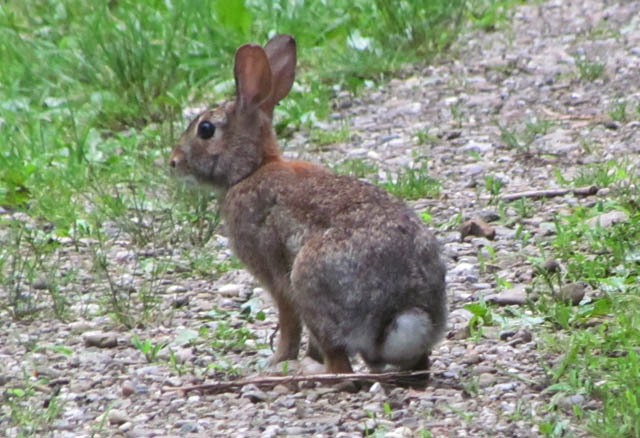This is a very adaptable mammal. I’ve seen them at school, work and occasionally in my backyard. The rabbits in this post were all seen near the Lake Erie shore while on a recent trip to Pennslyvania. Eastern Cottontails communicate with each other by thumping with their back feet against the ground.
Historically, the Eastern Cottontail inhabited fields, swamps and hardwood forests. These days it prefers “edge environments” between woody vegetation and open land. Its range of habitats includes meadows, orchards, farmlands and hedgerows.
They can be seen year-round. At this time of the year they browse in the evening and at night on grasses and herbs (they are also fond of garden fare). In Winter their diet consists of bark, twigs and buds.
During the day, cottontails often remain hidden in vegetation. Cottontails have keen eyesight and hearing. When danger is sensed, a rabbit will usually freeze in place until danger has passed. If approached too closely, they flee, running in a zigzag pattern, sometimes reaching speeds of up to 18 miles per hour.
This animal is an essential element of the food chain, serving as prime prey for many predators. As a result, Eastern Cottontail life expectancy is extremely short – one year or less – requiring the prolific reproduction so often attributed to rabbit species. Adaptability pays off; Eastern Cottontail is one of the most common mammals of both the natural and the human-generated ecosystems in North America.

